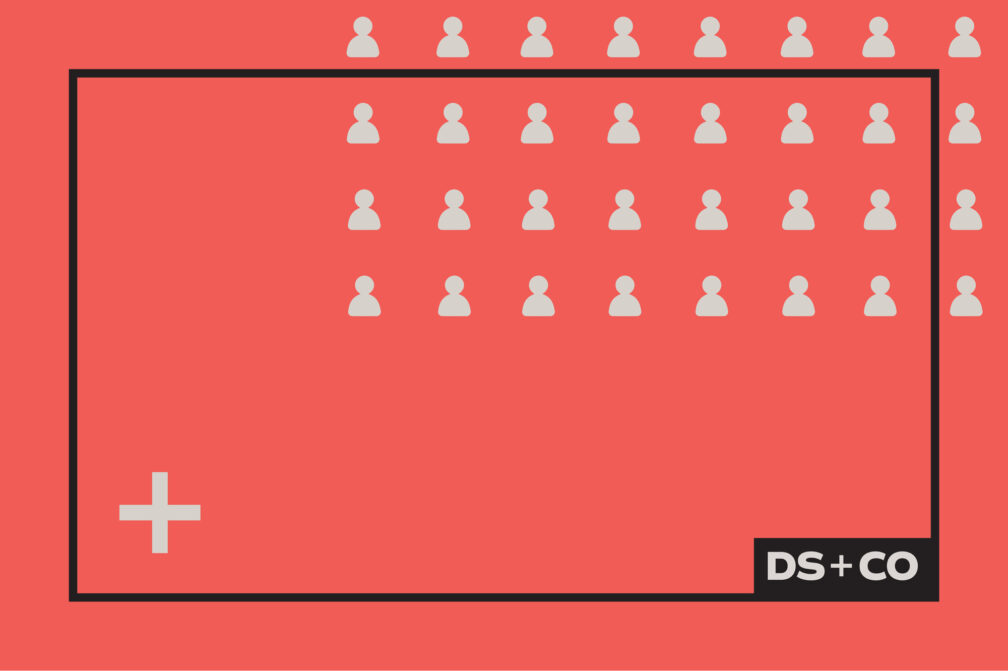Blog
Conscious Brands

Building a community in 2022 means providing value way beyond products + services
Think about your following on social media. Yes, you absolutely have one—it’s your friends on Facebook, followers on Instagram and TikTok, connections on LinkedIn. Of these followers, how many would you look at and say, “Those are my people”? We’re talking friends who feel like family, family who feel like friends, colleagues who feel like counterparts and supervisors who feel like mentors. It’s a guarantee that “your people” are a small percentage of your total followers.
That’s your community. They’re the people who are the most invested in what you do. And for brands, this phenomenon is no different. Their people are called “regulars,” “fanatics,” “brand ambassadors.” Orbiting around this group is a community built on conversation and shared experiences—a gravitational passion that pulls others in and gives them space to grow and share their own experiences. Sometimes it’s about the brand and its products. Sometimes it’s about the lifestyle those products impact. Either way, it’s home to the most influential subset of customers a brand could want.
This is also why they can be overlooked. It’s easy to think “Oh, they’re already engaged, already spending more money than the average customer, so why spend marketing dollars on them when we could target prospects?” This is where leaning on a very basic business adage called the 80/20 rule comes in: 80% of your sales will come from 20% of your audience. This acknowledges the financial weight a community carries with it. By engaging a community-building strategy, you don’t just foster your existing community—you grow it.
Warning: This is not a campaign. To be successful, it needs to be a sustainable, supported segment of your annual marketing strategy. And here’s how to build it.
Listen, Learn and Lean Into What (and Where) Your Customers Communicate
First things first: Find your people. If you have one already, an opt-in email list is a great place to start because these are people who’ve told you they’re interested. An early goal should be to grow this list and study which content is driving the most engagement. Beyond that, scour social media channels (whether you’re on them or not) to see if and how your brand is being mentioned. The type of people and the conversations they have are likely to be unique from platform to platform, and those differences will inform your communication strategy yet to come. Then, go deeper with your search by going outside of your brand. Search for the topics and themes that your users live by (whether they’re your customers or not). With every post, they’re telling you something about what they value. Distill those points into themes that your brand could counter or complement with its own value. Spoiler alert: This doesn’t and shouldn’t mean a product or service. As a member of this community yourself, sometimes a conversation is the best thing your brand can offer.
Prioritize Your Opportunities and Focus Your Effort
This is a catch-all for anything that has more opportunities than budget (i.e., everything), but for community building, it’s about scaling in a way that ensures you do it right. Based on your research, you have a good idea of the universe your community is living in. Because this is a smaller population than the galaxy of potential customers, focus on opportunities with the highest density of community members first. Could be 10 or 10,000—all of that depends on your product and the criteria that make these people important. Selecting the platforms you’ll use to build your community will narrow the tools and tactics you’ll use to get there. For instance, Instagram has a certain set of strengths and features that are unique from other platforms, and you know your audience acts a certain way here. Use that perspective to build out the ways you’ll engage your community.
Empower Your Community Through Co-creation
Customers—even your biggest fans—understand that your brand’s intention is to influence them to buy. This is a natural barrier that can sometimes stop community members from believing a brand understands them. Brands should, instead, offer that trust to their communities by inviting and encouraging opportunities for co-creation. Invested end users have some of the best perspective on products and services, so create pathways for them to influence the brand’s decisions. Whether it’s new features or whole new products, a good community can be a valuable resource for R&D, so welcome it and then celebrate it when you get the chance. Beyond products, invite your community to create experiences through live events or virtual activations. Polls, surveys or simple social media engagement campaigns can give communities a stronger sense of ownership, a far-more desired role than “customer.”
Above all else, remember that you really don’t have to “sell” to this group. After all, your community is already buying. Instead, augment the value of your products with the value of your brand, serving as a resource to help them get what they want out of the relationship.
Paul Gangarossa
Paul Gangarossa is a marketing strategist who is focused on identifying insights that pave the way for successful campaigns. Contact him at paul_gangarossa@dixonschwabl.com.